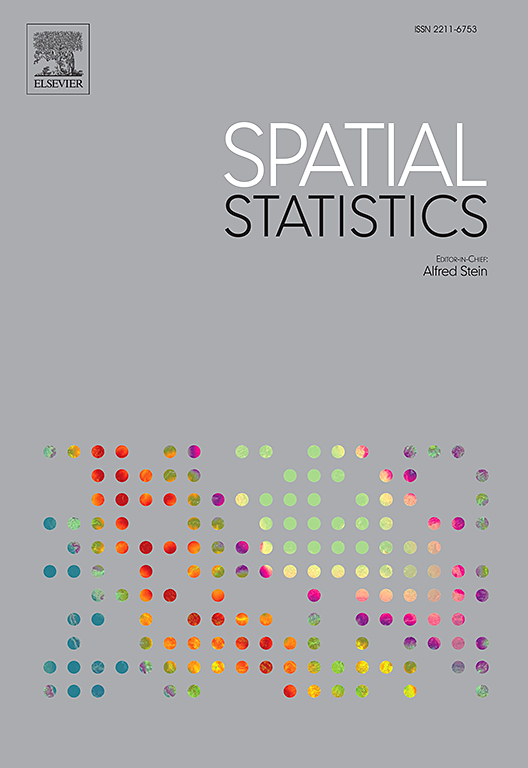A penalized estimation of the variogram and effective sample size
IF 2.5
2区 数学
Q3 GEOSCIENCES, MULTIDISCIPLINARY
引用次数: 0
Abstract
The variogram function plays a key role in modeling intrinsically stationary random fields, especially in spatial prediction using kriging equations. However, determining whether a computed variogram accurately fits the underlying dependence structure can be challenging. Current nonparametric estimators often fail to guarantee a conditionally negative definite function. In this paper, we propose a new valid variogram estimator, constructed as a linear combination of functions from a predefined class, ensuring it meets essential mathematical properties. A penalty coefficient is introduced to prevent overfitting, reducing spurious fluctuations in the estimated variogram. We also extend the concept of effective sample size (ESS), an important metric in spatial regression, to a nonparametric framework. Our ESS estimator is based on the reciprocal of the average correlation and is calculated using a plug-in approach, with the consistency of the estimator being demonstrated. The performance of these estimates is investigated through Monte Carlo simulations across various scenarios. Finally, we apply the methodology to rasterized forest images, illustrating both the strengths and limitations of the proposed approach.
对变异函数和有效样本量的一种惩罚估计
变异函数在固有平稳随机场的建模中起着关键作用,特别是在利用克里格方程进行空间预测时。然而,确定计算的变异图是否准确地符合潜在的依赖结构可能是具有挑战性的。目前的非参数估计方法往往不能保证有条件的负定函数。在本文中,我们提出了一种新的有效变差估计量,它是由一个预定义类的函数的线性组合构造而成,并保证了它满足基本的数学性质。引入惩罚系数以防止过拟合,减少估计变异图中的虚假波动。我们还将有效样本量(ESS)的概念扩展到非参数框架,这是空间回归中的一个重要度量。我们的ESS估计器基于平均相关性的倒数,并使用插件方法计算,并演示了估计器的一致性。这些估计的性能是通过蒙特卡罗模拟在各种情况下进行研究的。最后,我们将该方法应用于栅格化森林图像,说明了所提出方法的优点和局限性。
本文章由计算机程序翻译,如有差异,请以英文原文为准。
求助全文
约1分钟内获得全文
求助全文
来源期刊

Spatial Statistics
GEOSCIENCES, MULTIDISCIPLINARY-MATHEMATICS, INTERDISCIPLINARY APPLICATIONS
CiteScore
4.00
自引率
21.70%
发文量
89
审稿时长
55 days
期刊介绍:
Spatial Statistics publishes articles on the theory and application of spatial and spatio-temporal statistics. It favours manuscripts that present theory generated by new applications, or in which new theory is applied to an important practical case. A purely theoretical study will only rarely be accepted. Pure case studies without methodological development are not acceptable for publication.
Spatial statistics concerns the quantitative analysis of spatial and spatio-temporal data, including their statistical dependencies, accuracy and uncertainties. Methodology for spatial statistics is typically found in probability theory, stochastic modelling and mathematical statistics as well as in information science. Spatial statistics is used in mapping, assessing spatial data quality, sampling design optimisation, modelling of dependence structures, and drawing of valid inference from a limited set of spatio-temporal data.
 求助内容:
求助内容: 应助结果提醒方式:
应助结果提醒方式:


